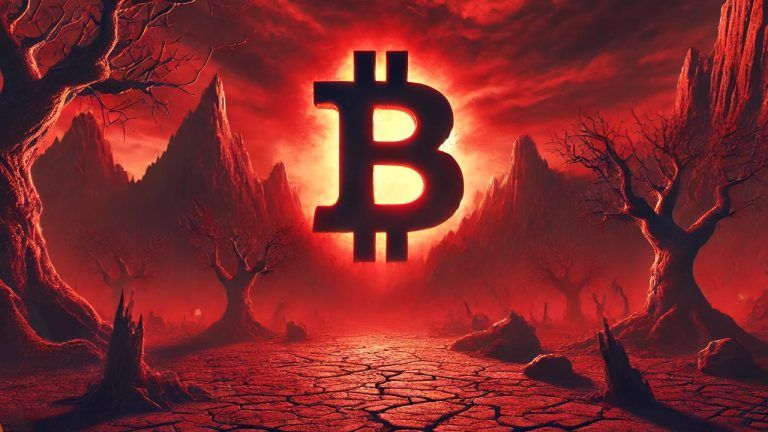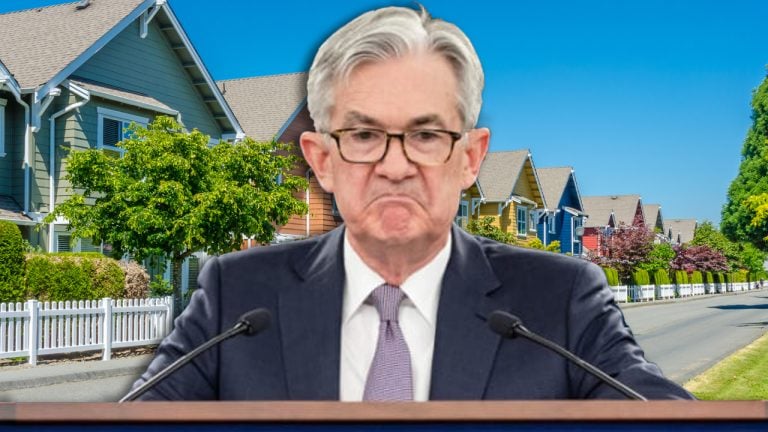
Donald Trump’s win in the United States presidential election may not be the “main story” driving the Bitcoin price rally, says Onramp Bitcoin co-founder Jesse Myers.
Donald Trump’s election victory in the United States is unlikely “the main story” behind Bitcoin’s recent pump — with an analyst pointing instead to a post-halving supply shock.
“If you’re wondering what’s happening with #Bitcoin… Yes, the incoming Bitcoin-friendly administration has provided a recent catalyst… But, that’s not the main story here,” said Onramp Bitcoin co-founder Jesse Myers in a post on X on Nov. 11.
The Bitcoin (BTC) halving in April cut block rewards from 6.25 BTC to 3.125 BTC, which means every next block becomes harder to solve for less reward.
 According to the latest data, $305.43 million was liquidated across crypto derivatives exchanges when bitcoin dipped below $57,000. One analyst predicts that with the Mt Gox and German government sell-offs, “supply will likely outstrip demand.” Conversely, QCP Capital notes that despite the current crypto sell-off, the options market remains hopeful. Crypto Liquidation Tops $305M as […]
According to the latest data, $305.43 million was liquidated across crypto derivatives exchanges when bitcoin dipped below $57,000. One analyst predicts that with the Mt Gox and German government sell-offs, “supply will likely outstrip demand.” Conversely, QCP Capital notes that despite the current crypto sell-off, the options market remains hopeful. Crypto Liquidation Tops $305M as […]
Discover how a reduction in supply affects the price of Bitcoin, and how market participants perceive and react to halving events in the dynamic cryptocurrency market.
Bitcoin (BTC), the pioneering cryptocurrency that sparked a global revolution in digital assets, operates on a unique monetary policy. One of the defining features of Bitcoin is its halving event, which occurs approximately every four years.
This article will explore the economics behind Bitcoin’s halving, examining its effects on price movements and market sentiment. By understanding these factors, investors and enthusiasts can gain valuable insights into the cryptocurrency’s market behavior.
Related: How does the monetary supply affect cryptocurrencies?
A Bitcoin halving, also known as a “halvening,” refers to the predetermined reduction in the rate at which new BTC are created. It is programmed into the Bitcoin protocol and occurs every 210,000 blocks, which is roughly every four years. The halving event halves the block reward, reducing the number of newly minted Bitcoin awarded to miners.

A Bitcoin halving directly impacts the supply and demand dynamics of the cryptocurrency. By reducing the rate at which new BTC enters the market, halving effectively reduces the available supply. As the supply decreases, assuming demand remains constant or increases, basic economic principles suggest that the price of Bitcoin should rise.
Supply and demand is the basic economic principle supporting a price increase in response to Bitcoin’s halving. The law of supply and demand states that prices tend to increase when a commodity’s supply declines, and demand either stays the same or rises. The Bitcoin halving slows the rate of new Bitcoin creation and market release.
As a result, there are fewer newly created BTC available for purchase. The diminished supply produces a scarcity effect, which might push the price upward if demand for Bitcoin stays the same or rises.
Bitcoin’s controlled supply is a key factor contributing to its value proposition. The total supply of Bitcoin is limited to 21 million coins, and the halving mechanism gradually reduces the rate at which new BTC are produced until the maximum supply is reached. This scarcity aspect, coupled with the increasing recognition and adoption of Bitcoin, can create a perception of limited availability and drive up demand, thereby impacting the price.
Halving events have frequently been associated with increases in the price of Bitcoin, with significant upward momentum both before and after previous halvings. For example, during the 2012 halving, Bitcoin’s price soared from about $12 to over $200 in just one year. Similarly, Bitcoin experienced a stunning recovery after its 2016 price halving, reaching a high of about $19,700 in December 2017.
Following the most recent halving event in May 2020, Bitcoin’s price surged. Starting at $8,787 during the halving, the cryptocurrency experienced a remarkable rally, eventually reaching its all-time high of nearly $69,000 in November 2021.
Bitcoin halving events often generate increased market attention and hype. Expectations of lower supply and likely price increases may fuel positive feelings among investors and traders. This optimism could result in higher demand for Bitcoin as traders try to profit from the expected price gain. As a result, a Bitcoin halving can result in the self-fulfilling prophecy of rising market sentiment and demand.
It is crucial to remember that during halving occurrences, market sentiment isn’t always favorable. Market participants may also experience FUD around the potential effects of a price halving. Short-term price swings and heightened volatility may result from this conflicting sentiment.
The Bitcoin halving event may also impact mining economics. Block rewards and transaction fees are the primary sources of income for miners, which are essential to confirming transactions and safeguarding the Bitcoin network.
The decrease in block rewards caused by a halving event directly affects miner profitability. After a halving event, miners operating with increased expenses might find it less profitable to mine Bitcoin, which could result in a drop in mining activity.
Related: ‘Don’t short when it’s dark green’: How to trade the 2024 Bitcoin halving
Bitcoin’s halving may initially impact mining economics, but it also plays a critical role in preserving the network’s long-term security and stability. Miners are encouraged to continue their activities and secure the network through transaction validation due to the carefully managed decline in block rewards.
The network becomes more robust and less dependent on freshly created currencies for security as the mining industry adapts to the decreased block rewards.
Collect this article as an NFT to preserve this moment in history and show your support for independent journalism in the crypto space.

The economy is a system of producing and exchanging goods and services in a society.
The economy is a complex system of production, distribution, and consumption of goods and services. Understanding how the economy works can be challenging, but it is essential for making informed decisions about personal finance, investing and public policy.
This article will explore the fundamental concepts of how the economy works, including the factors that influence it and the various components that make up the economy.
The economy is a dynamic system that is constantly changing and evolving. It is a vast network of people, organizations and governments; each involved in creating, moving, and using commodities and services. The economy is influenced by a wide range of factors, including macroeconomic factors like government policies, interest rates and international trade, as well as microeconomic factors such as individual decisions about spending and saving.
Through its policies, the government significantly impacts how the economy develops. Fiscal policy, for instance, describes how the government uses spending and taxation to affect the economy. The government can stimulate the economy or deflate an overheated one using its purchasing power. Taxation is another tool the government can employ to manage the money supply and affect the level of economic activity.
➡️ New: Legislature's personal income tax & corporate tax proposals would raise between $1.6 – $2.1 billion:
— Fiscal Policy Institute (@NYFiscalPolicy) March 16, 2023
• Senate & Assembly income tax increase: $710M
• Assembly corporate tax increase: $1.2B for MTA & other transit
• Senate corporate tax MTA surcharge: $930M for MTA pic.twitter.com/zj4gYE319K
The cost of borrowing money is represented by interest rates, which impact both consumer spending and company investment. Borrowing money is less expensive when interest rates are low, which can promote economic growth. High interest rates make borrowing more costly, which can stifle economic growth.
International trade also plays a crucial role in the economy. Trade between countries allows for the exchange of goods and services, which can increase economic growth and efficiency. However, trade can also lead to job losses in certain industries and countries, and imbalances in the trade deficit.
The economy comprises three primary components: households, businesses and government. Each of these components plays a vital role in the economy and interacts with the others in complex ways.
Households are the consumers of goods and services. People use the money they earn from employment or investments to pay for goods and services from companies. Due to the fact that household spending makes up a sizable share of the demand for goods and services, it has a considerable impact on economic growth.
Businesses are the producers of goods and services. To create items and services sold to consumers or other businesses, they employ staff and invest in inputs like raw materials, equipment and technology. Business investment is critical to economic growth since it boosts productivity and creates jobs.
The government plays a crucial economic role through its policies and spending. The government provides essential public goods and services such as education, healthcare and infrastructure, and it also regulates the economy to ensure fair competition and protect consumers.
Several economic indicators are used to measure the health of the economy. These indicators provide insight into the level of economic activity, and can help individuals and policymakers make informed decisions.
GDP is the total value of goods and services produced in a country over a specified period — usually a year. GDP is one of the most widely used economic indicators and provides a broad measure of economic activity.
Public sector debt excluding public sector banks was £2,507.3 billion at the end of February 2023, or around 99.2% of gross domestic product.
— Office for National Statistics (ONS) (@ONS) March 21, 2023
A debt-to-GDP ratio last seen in the early 1960s.
➡️ https://t.co/eEaU2HoHvy pic.twitter.com/rHvCU9heBg
The unemployment rate is the proportion of the labor force that is unemployed but actively looking for work. It is an important indicator of the labor market’s health and sheds light on the level of economic activity. High unemployment rates indicate a low labor market and a low level of economic activity. In contrast, low unemployment rates indicate a strong labor market and a high level of economic activity.
The inflation rate gauges how quickly the average cost of goods and services is rising across an economy. Several causes, like a growth in the amount of money in circulation or a rise in the demand for goods and services, can contribute to inflation. Low inflation rates might signal sluggish economic growth, whereas high inflation rates can signal an overheated economy.
Related: How to preserve capital during inflation using cryptocurrencies?
The CPI measures the average price of a basket of household goods and services. It is used to track inflation over time and to adjust for changes in the cost of living. The CPI is an important indicator of consumer spending patterns, providing insight into the economy’s health.
#BEFOREandAFTER
— Man In the Middle (@NE1Honest) March 24, 2023
Inflation "Good News, Bad News"
The GOOD NEWS is increases to the Producer Price Index &the Consumer Price Index are slowing!
The BAD NEWS is the CPI is 4 times what it was on Inauguration Day &the PPI is triple!
I.e. Inflation has to fall over 75% for us to… pic.twitter.com/c7Req5JO4J
Retail sales are a measure of the total amount of goods sold by retailers over a specified period. Retail sales can be a good indicator of consumer spending patterns. High retail sales indicate a strong economy, while low retail sales suggest weak economic activity.
Industrial production measures the total output of the industrial sector of the economy, including manufacturing, mining and utilities. It is an important indicator of the health of the manufacturing industry — a critical component of many economies.
The number of new residential construction projects that have started over a specific period is called housing starts. They are a crucial gauge of the housing market’s health and the state of the overall economy. Low numbers of home starts can signify sluggish economic activity, while high levels can suggest significant economic growth.
Blockchain technology has the potential to significantly impact economic growth in several ways. By enabling secure and efficient transactions, reducing costs, and increasing transparency and trust, blockchain can promote innovation, productivity and financial inclusion.
Related: How blockchain empowers women in developing economies
In addition, blockchain-based apps can produce fresh company models and sources of income, stimulating the economy and opening up job prospects. Because blockchain technology is still in its early stages of development and adoption, the total influence of this technology on economic growth has not yet been realized.
Yet, the ability of blockchain to revolutionize many businesses and sectors — from logistics and supply chains to finance and healthcare — makes it a viable tool for promoting economic growth in years to come.
 Following the Covid-19 pandemic, real estate investors did extremely well, despite the millions of Americans that were put out of work and faced evictions during the lockdowns in 2020. Stimulus put a bandage on the financial wounds inflicted by Mainstreet business shutdowns and deadlocked supply chains. In fact, after the pandemic, America’s housing market boomed […]
Following the Covid-19 pandemic, real estate investors did extremely well, despite the millions of Americans that were put out of work and faced evictions during the lockdowns in 2020. Stimulus put a bandage on the financial wounds inflicted by Mainstreet business shutdowns and deadlocked supply chains. In fact, after the pandemic, America’s housing market boomed […] The U.S. economy is looking stagnant according to data stemming from the Bureau of Economic Analysis, as core personal consumption expenditures (PCE) jumped 3.4% in May from a year prior. The recent PCE spike is the highest year-over-year basis change since 1992 and the statistic is fueling inflation concerns. Amid ‘Never Ending’ Market Rallies, Core […]
The U.S. economy is looking stagnant according to data stemming from the Bureau of Economic Analysis, as core personal consumption expenditures (PCE) jumped 3.4% in May from a year prior. The recent PCE spike is the highest year-over-year basis change since 1992 and the statistic is fueling inflation concerns. Amid ‘Never Ending’ Market Rallies, Core […]